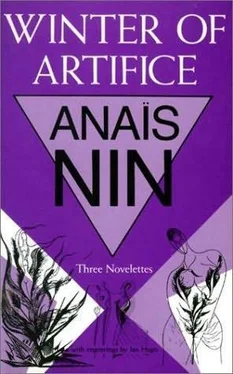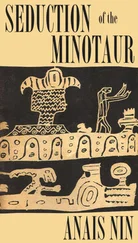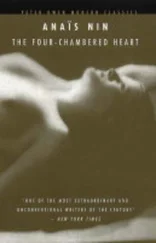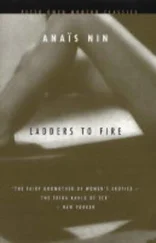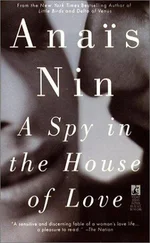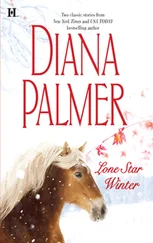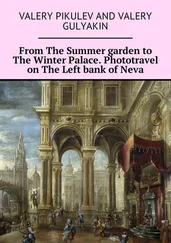Anaïs Nin - The Winter of Artifice
Здесь есть возможность читать онлайн «Anaïs Nin - The Winter of Artifice» весь текст электронной книги совершенно бесплатно (целиком полную версию без сокращений). В некоторых случаях можно слушать аудио, скачать через торрент в формате fb2 и присутствует краткое содержание. Год выпуска: 2007, Издательство: Sky Blue Press, Жанр: Классическая проза, на английском языке. Описание произведения, (предисловие) а так же отзывы посетителей доступны на портале библиотеки ЛибКат.
- Название:The Winter of Artifice
- Автор:
- Издательство:Sky Blue Press
- Жанр:
- Год:2007
- ISBN:нет данных
- Рейтинг книги:4 / 5. Голосов: 1
-
Избранное:Добавить в избранное
- Отзывы:
-
Ваша оценка:
- 80
- 1
- 2
- 3
- 4
- 5
The Winter of Artifice: краткое содержание, описание и аннотация
Предлагаем к чтению аннотацию, описание, краткое содержание или предисловие (зависит от того, что написал сам автор книги «The Winter of Artifice»). Если вы не нашли необходимую информацию о книге — напишите в комментариях, мы постараемся отыскать её.
“A handful of perfectly fold fables, and prose which is so daringly elaborate, so accurately timed… using words as magnificently colorful, evocative and imagist as any plastic combination on canvas but as mysteriously idiosyncratic as any abstract.”
—
The Winter of Artifice — читать онлайн бесплатно полную книгу (весь текст) целиком
Ниже представлен текст книги, разбитый по страницам. Система сохранения места последней прочитанной страницы, позволяет с удобством читать онлайн бесплатно книгу «The Winter of Artifice», без необходимости каждый раз заново искать на чём Вы остановились. Поставьте закладку, и сможете в любой момент перейти на страницу, на которой закончили чтение.
Интервал:
Закладка:
3
For a history of Nin’s press, see Jason 1984. Nin writes about the press in Nin 1973.
4
I cannot determine the number of copies printed of The Winter of Artifice . Almost certainly, there were not more than 1,000. In the 1930s, the Obelisk Press published several books by Henry Miller. Lawrence J. Shifreen and Roger Jackson, Miller’s bibliographers, note that it published 1,000 copies of Tropic of Cancer (1934), Black Spring (1936), Max and the White Phagocytes (1938), and Tropic of Capricorn (1939); 200 copies of Scenario (1937); and 150 copies of Aller Retour New York (1935) (Shifreen and Jackson 1993, 5, 55, 78, 81, 72, 51.)
In a guide to writings about Nin, Rose Marie Cutting lists two reviews of The Winter of Artifice , one by Emily Hahn published in Shanghai and another by Alfred Perles published in London (Cutting n.d., 2-3).
Maurice Girodias, son and successor of Jack Kahane, owner of the Obelisk Press, relates the understanding between publisher and authors about the payment of printing costs for the three books that Obelisk published in the Villa Seurat series, a series named after Miller’s Paris residence, 18 Villa Seurat. According to Girodias, his father would pay the costs for the first volume, Miller’s Max and the White Phagocytes ; Nin, for Durrell’s The Black Book ; Durrell, for Nin’s The Winter of Artifice . Girodias also records that, at Durrell’s suggestion, Nin and Durrell would pay for the printing of each other’s book rather than their own in order to avoid the sense of defeat that vanity publication might have created (Girodias 1980, 239). However, Gunther Stuhl-mann and Jay Martin claim that Nancy Durrell, wife of Lawrence, paid the printing costs for all three books. Martin also notes that the Villa Seurat series ceased publication (with The Winter of Artifice ) when she could no longer support it (Nin 1996, 379; Martin 1978, 330). Commenting about underwriting Nin’s “Chaotica” (a working title for The Winter of Artifice ) in a letter to Lawrence Durrell (5 November 1938), Henry Miller writes, “Let us know, will you, if the money is still available for this book? Hope you are not bankrupt yet” (Durrell and Miller 1988, 107). Lawrence Durrell’s biographer observes that “the PS150 it cost to print the three titles came from Nancy’s capital” (MacNiven 1998, 183). In a diary entry dated 1 November 1937, Nin states that “Larry is putting up the money [to Kahane] for three books” (Nin 1996, 162). In an entry dated 13 December 1938, she notes that “Durrell is bringing [ The Winter of Artifice ] out in February [1939],” implying that Durrell published this book (Nin 1996, 280). In an entry dated January 1943, Nin records that “Lawrence Durrell backed the publication of Winter of Artifice ” (Nin 1969, 259). Nin dedicates The Winter of Artifice to the Durrells: “To/NANCY and LARRY/with love.” James Armstrong addresses the date of Kahane’s death in Armstrong and Miers 2003, 31, 41 n91. A statement in The Winter of Artifice indicates that it was published in June 1939; Nin reports receiving her copies in mid July (Nin 1996, 345).
The context of Nin’s comment about censorship indicates that she means United States censorship. Conceivably, she means French censorship. I cannot confirm that The Winter of Artifice was censored or banned in either country. James Armstrong does not include Nin’s book among the Obelisk Press publications “banned in Britain and the United States” (Armstrong and Miers 2003, 24). Jay Martin details Henry Miller’s successful effort to smuggle into the United States copies of his banned books, “one at a time.” Drawing on a letter from Miller to Emil Schnellock, Martin notes that Nin “held the unofficial book-smuggling record by managing to bring in fifty copies on one trip” (Martin 1978, 330). If she smuggled in so many copies of Miller’s books, she probably would have attempted to smuggle in copies of a banned book of her own ( The Winter of Artifice ) if she had access to them.
On 4 October 2006, abebooks.com listed for sale three copies of The Winter of Artifice . The prices, in United States dollars: $600, $962, and $1,000.
5
Before Johanna’s arrival, scenes shift between the residences of Hans and Djuna; yet, Djuna says that “I had been living with” him (Nin 1939, 81). Johanna’s hotel is mentioned on 71.
6
In a diary entry dated 8 February 1939, Nin mentions reading proofs of The Winter of Artifice with Henry Miller (Nin 1996, 309). I cannot determine when Nin became aware that Miller’s influence on her composition of this book was too great, although in a diary entry dated November 1941 she notes that she is “revising Winter of Artifice ” (Nin 1969, 162). What Nin means by “just beginning to write” is unclear. The Winter of Artifice was her third book; in 1937 and 1938 — the two years before the publication of this collection of novellas — ten of her short pieces appeared in little magazines.
7
Manuscripts and typescripts of Nin’s fiction — including those for much of The Winter of Artifice — are Northwestern University, which bought them at the suggestion of Felix Pollak. See Pollak 1952. For an inventory, see Van der Elst 1978 and Zee 1972.
8
In the draft, the character speaking with Rab is Mandra, who is Djuna in the published version.
9
For an example of Miller’s sensitive, positive analysis of Nin’s writing, see Miller 1988. Responding in the 1960s to the question “Did you [and Miller] influence each other as writers?,” Nin states, “No, except in the sense that we encouraged each other…. But above all it was an understanding of what the other was doing” (Vaid 1987, 52-53).
10
Characters based on the Millers appear in fiction Nin published subsequent to The Winter of Artifice . In most of her novels, she uses the characters Jay and Sabina, who were inspired, respectively, by Henry Miller and June Miller. A character (first named Alraune, then Sabina) based on June Miller appears in The House of Incest (editions after the first omit the definite article).
11
Deirdre Bair explains why Nin’s original diaries do not exist. Five years after engaging Virginia Admiral and Robert Duncan to rewrite her diary, in the mid 1940s Nin engaged Lila Rosenblum to help, mostly to correct her grammar, spelling, and punctuation. Anaïs wrote new versions of old events on lined pads, which Lila corrected. Then Anaïs recopied the corrected pages into booklets, some of which she had Lila type. This generally led to further rewriting and correcting, and when she was finally satisfied with the typed copies, she destroyed the originals. It was a process that went on and on, sometimes “hundreds of times.” She inserted all these carefully typed pages into loose-leaf folders, and when she gave them to someone to read, always insisted they were reading her original diaries. Anaïs Nin carried on this process of self-expurgation all her life. (Bair 1995, 324-25)
In The Diary of Anaïs Nin, 1931-1934 (apparently superseded by the presumably unexpurgated Henry and June ), the paragraph about the sandal shop, dated 30 December 1931, reads as follows:
We walked to the sandal shop. In the shop the ugly woman who waited on us hated us and our obvious happiness. I held June’s hand firmly. I commanded: “Bring this. Bring that.” I was firm, willful with the woman. When she mentioned the width of June’s feet I scolded her. June could not understand the French-woman, but she sensed that she was disagreeable. (Nin 1966, 32)
Читать дальшеИнтервал:
Закладка:
Похожие книги на «The Winter of Artifice»
Представляем Вашему вниманию похожие книги на «The Winter of Artifice» списком для выбора. Мы отобрали схожую по названию и смыслу литературу в надежде предоставить читателям больше вариантов отыскать новые, интересные, ещё непрочитанные произведения.
Обсуждение, отзывы о книге «The Winter of Artifice» и просто собственные мнения читателей. Оставьте ваши комментарии, напишите, что Вы думаете о произведении, его смысле или главных героях. Укажите что конкретно понравилось, а что нет, и почему Вы так считаете.
